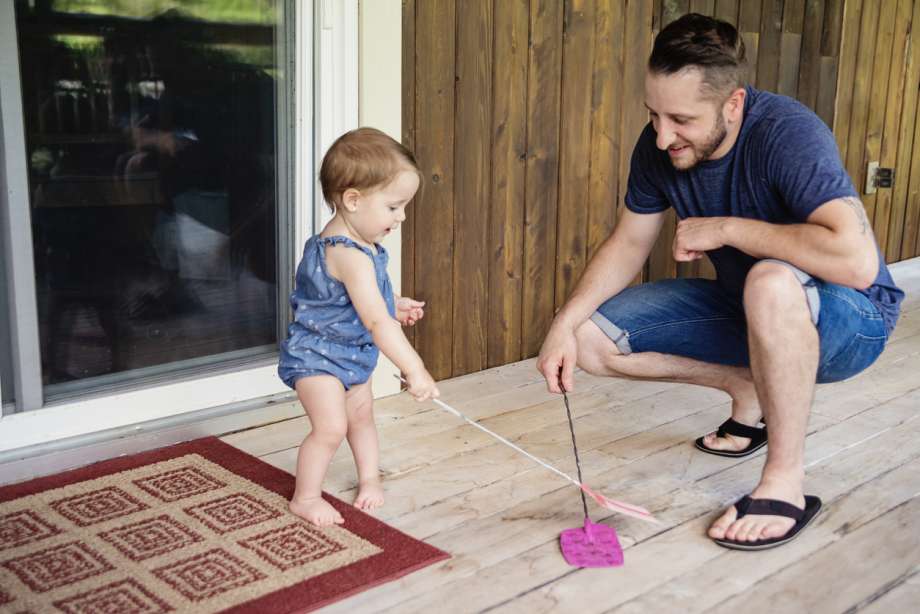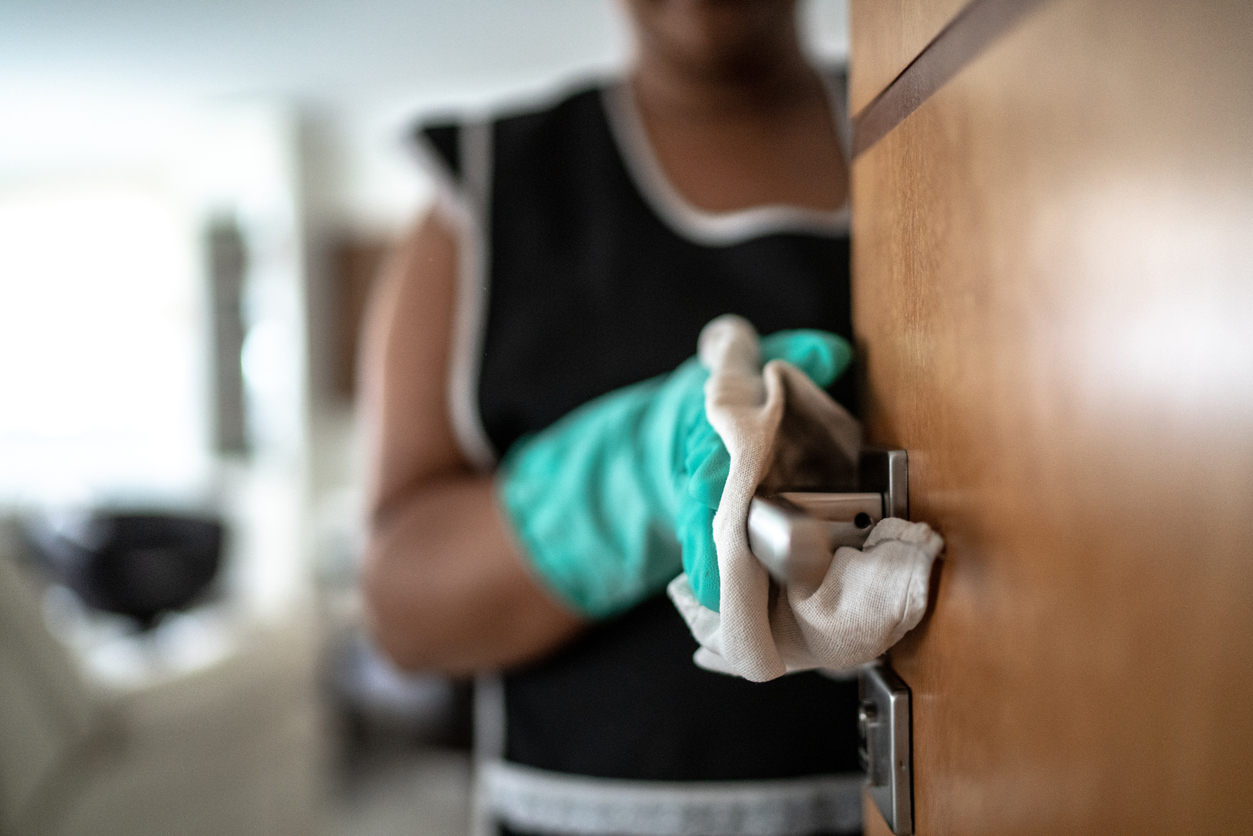Handling Fly Infestations in the Home

Houseflies are often called “filth flies,” and for good reason. They chow down on nasty things– garbage, manure, dead animals, and the like. These also serve as breeding and egg-laying sites.
Houseflies are such danged nasty pests that it’s hard to believe that they are considered beneficial bugs in nature, but they are. As decomposers of dead and decaying vegetation and organisms, they perform a vital function. They’re also an important part of the food chain, serving as a food source for birds, reptiles, fish, and even some kinds of plants.
Because flies often feed on filth, they can harm people and animals by spreading diseases such as dysentery and typhoid fever. They can also contaminate food and cause food poisoning and/or diarrhea. When feeding, some flies– most notably stable flies and mosquitos, which fall into the same order– can also inflict painful bites.
Most flies prefer to spend their time outdoors, but a handful of species have found human structures perforable to living in the wild. There are two categories of these pests:
- Household-infesting flies, breed and complete their life cycles indoors when they can find favorable breeding spots.
- Household–invading flies. These flies breed and develop outdoors, but come inside during certain times of the year.
Experts recommend identifying the species that are invading your home. Doing so is key to figuring out what’s causing the infestation and helps pinpoint Integrated Pest Management (IPM) measures. This is a good idea and will put you in control faster, but simply following a good IPM plan will accomplish the same goals. It just might take longer.
Types of Houseflies
Think a few flies aren’t that big of a deal? Think again. One fly can carry about 1.9 million bacteria on its body and more than 200 pathogens of different kinds.
Here’s a quick description of the different categories and species in each, just in case you do want to take the focused approach. The ones you’re most likely to encounter lead off each list:
House-infesting flies:
- Housefly. The most common fly pest around homes. They lay eggs on wet decaying organic matter, on animal manure, and in rotting plant debris.
- Blow/Bottle fly. Shiny, metallic flies. They lay their eggs on dead animal carcasses, decaying meat, and garbage that contains meat scraps. Called blow flies because their larvae develop inside dead animals, causing the carcasses to bloat.
- Fruit fly. Tiny tan flies with red eyes. More of a problem during the fall, they reproduce and develop on overripe and rotting fruit, vegetables, and other moist plant materials. They also feed in drains where organic and other moist debris has been allowed to accumulate.
- Phorid fly. Very small fly that flies with its back legs hanging down. They like to lay eggs on rotting vegetables, fruit, or meat; potted plants; wet organic soil, and cut flowers; and in garbage disposals and floor drains.
- Drain fly. Also called moth, sewer, or filter flies. They breed in the organic material that can build up inside drainpipes. If you have flies in your bathroom, they’re probably these.
House-invading flies:
- Cluster fly. Not filth flies, but a common indoor pest. Dark gray flies, about the same size as blow flies. They’re slower flyers and smell like honey when swatted. Adult flies over winter in the top floors or attics of homes, typically choosing the south- and west-facing walls where they can stay warm. On warm days they’ll invade indoor spaces and collect en-masse at windows, often in rooms that aren’t used regularly.
- Face fly. These flies resemble houseflies. They pester cattle during the summer and over winter in wall voids. Adults will emerge from attics and walls during warm days. They’re typically more of a problem in rural areas, especially in homes near pastures or where cattle are kept.
- Flesh fly. These flies are gray with black stripes. They feed on animal carcasses, compost piles, and garbage dumpsters.
- Stable fly. Also called biting houseflies, they feed on the blood of warm-blooded animals, including humans. Their bite is painful, most often incurred around the ankles, and they’ll even bite through clothing in their quest for blood. Adults lay eggs in decaying vegetation, including rotting straws, grass clippings, compost piles, and decaying fruit and vegetables.
- Fungus gnat. These flies resemble tiny mosquitoes. They feed on fungi, which they find in over-watered plants and pigeon feces. Light attracts them, and they’ll come inside at night through open doors and windows.
IPM For Flies

Three IPM approaches — sanitation, inspection, and exclusion — are most effective when battling flies. Mechanical measures are also helpful; however, if you do a good job with the first steps, you may not need to do much more.
As mentioned, chemical control is the last resort for flies. It works, but it simply isn't as effective as other measures.
Sanitation
Having a hard time figuring out where fruit flies are coming from? Check your drains. Put some tape over the opening, leaving a little space for airflow. If you find flies on the tape, they're coming from the drain.
As previously detailed, almost all flies are attracted to filth, which they both eat and lay eggs in.
Most sanitation efforts are pretty obvious. It's always a good idea to manage garbage, yard, and garden wastes appropriately and to remove animal carcasses from your yard as soon as you see them.
Some sanitation approaches aren't as obvious. Cleaning household drains regularly, for example, is the best way to battle drains and phorid flies. Other sanitation approaches include
- Using garbage cans with tight-fitting lids. Line them with garbage can liners to keep waste from accumulating in the bottom or clinging to the sides. Clean the cans when they get dirty.
- Covering compost piles with black plastic sheeting. House flies, stable flies, fruit flies, blowflies, and gnats all breed in them. Covering piles not only keeps flies out but also helps organic matter decompose faster.
- Picking up animal waste regularly. It's best to pick up after your pets’ potty time. If you can't, don't let waste sit for too long, especially when it's warm outside.
- Don't let fruits and/or vegetables rot in your garden. Harvest everything promptly and remove all decaying plant material regularly.
Inspection
If fly problems continue, you'll need to look for fly-breeding sites that sanitation didn't eliminate. Knowing the species you're battling can be a big help here, as you'll only have to look for the substances that attract those flies.
Inspect your home and your grounds thoroughly. Be sure to check attics and crawl spaces for dead animals. Also, check eaves and rafters for bird activity.
Exclusion
House-invading flies typically come indoors when the seasons change, especially when there's a big difference between indoor and outdoor temperatures. Hot air lures them indoors when it's cold outside; cold air lures them indoors when it's hot.
You can do everything possible to manage fly-breeding sites indoors and out and still have problems with house-invading flies, as some of them are attracted to things other than filth.
House invaders will come inside anywhere they sense a temperature difference. The only way to prevent them from doing so is to eliminate those differences. Here's how:
- Install screens on all doors and windows, and use them. Make sure all screens fit tightly and are free of tears and holes. Inspect them regularly to make sure they stay that way.
- Screen all exterior vents. Screening with 14 to 16 strands per inch is effective for most flies, but may not keep out smaller species.
- Seal all cracks and crevices on the outside of your home with caulking or foam.
- Make sure all weather stripping around doors is in good shape. If it isn't, replace it. If you can see the light around a door, a fly will be able to sense the temperature difference.
If there are lots of flies around, keep chimney flues closed as well.
Mechanical Controls
Swatting is one of the best-known ways to eliminate flies, but it's not very efficient. Trapping them on flypaper is another time-tested mechanical approach. While the flypaper isn't pretty, it does do the job. Hang strips where flies are peskiest. A standard rule of thumb is one 10-inch strip for 1,000 cubic feet of space. There's a product similar to flypaper that you can mount on glass doors and windows. Since it's clear, it isn't as obvious as flypaper, and it does a good job of attracting and trapping all light-loving insects.
Outdoor flytraps are also available. These devices contain an attractant that lures the flies. For best results, hang them in full sun and low to the ground away from your house.
Ultraviolet light traps can be very effective for controlling some flies, especially those that fly at night. The proper placement is key for these traps. They need to be positioned where they can't be seen from outside, and in the fly zone-no more than 5 feet above the floor. Place away from food-preparation areas and other light sources.
Chemical Controls

As previously mentioned, insecticides are the last resort when battling flies. If necessary, use one or more of the following:
- Hang fly strips with pesticides in attics and/or small, unoccupied rooms where flies are a problem.
- Place fly bait outdoors where flies gather. You'll have to replace these if they come into contact with water.
- Spot-treat outdoor congregation areas with an over-the-counter spray. This will provide quick relief, but no residual effect.
- Apply a residual spray outdoors, again where flies hang out. You might need to hire a pest control expert to do this, as the best chemicals are only available to licensed pest management professionals.
The last approach is especially useful if done before house-invading flies look for places to stay for the winter.

